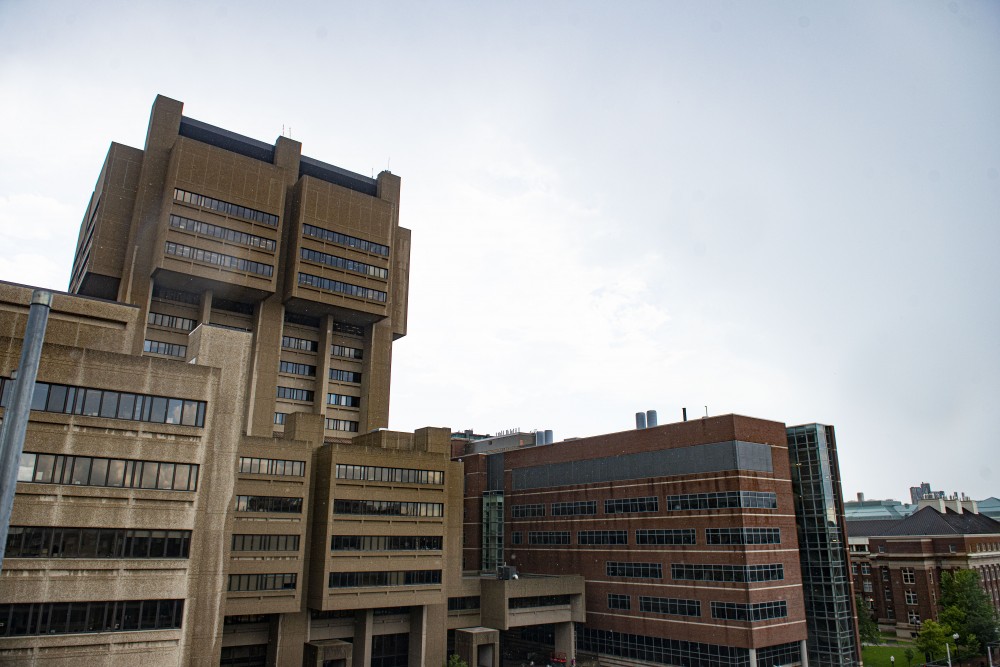Embryonic stem cell researchers at the University of Minnesota can breathe sighs of relief âÄî at least for now.
A panel of three judges for the U.S. Court of Appeals in Washington decided Tuesday afternoon to lift a temporary ban on federal funding for human embryonic stem cell research. Funding will continue while a federal lawsuit against President Barack ObamaâÄôs administration policy permitting the practice is decided.
TuesdayâÄôs decision could potentially save five ongoing University research projects that were in jeopardy of being terminated within 12 months had the ban against funding continued.
“ItâÄôs good that the threat of termination of this work is being lifted,” Jonathan Slack, director of the UniversityâÄôs Stem Cell Institute, said.
The projects focus on everything from heart and blood development and a new cancer treatment based on producing “natural killer cells” from embryonic stem cells to therapy for muscular dystrophy based on making muscle cells from embryonic stem cells.
Dan Kaufman, a Stem Cell Institute researcher, is involved in a number of projects involving embryonic and induced pluripotent stem cells âÄî cells produced in a lab to mimic embryonic stem cells. One grant proposal, which seeks to use embryonic cells in bone repair, is due to the National Institutes of Health next week, but he said he wasnâÄôt sure whether to include embryonic stem cells.
Now, Kaufman said, itâÄôll be a stronger grant application, and he wonâÄôt need to repeat previous trials with a different batch of stem cells.
Human embryonic stem cells, derived from donated human embryos, show greater research potential in that they possess the ability to develop into any cell, potentially forming new organs.
Most of KaufmanâÄôs projects have already nailed down their NIH grant funding, which are typically five-year grants doled out in annual increments.
Had the injunction persisted long enough, Kaufman wouldnâÄôt have received next yearâÄôs funding for the projects, “even though the money is already rewarded and this was deemed by the NIH as the most meritorious research deserving of study,” he said.
“Even the best science under that scenario is not getting funded,” he said.
The initial lawsuit began last year when adult stem cell researchers James Sherley and Theresa Deisher sued, arguing that NIH funding of embryonic stem cell research violates the 1996 Dickey-Wicker Amendment, which makes it illegal to use federal funds to create, destroy orotherwise damage embryos for research.
Judge Royce Lambert agreed, filing a temporary injunction against funding for the research on Aug. 23.
“The legal system and the NIH have worked on the basis that this amendment does not prohibit work with human ES cells since 1996,” Slack said, “so thereâÄôs no very good reason why they should change their mind on that now.”
A federal appeals court lifted LambertâÄôs injunction on Sept. 9 pending oral arguments from the NIH and the U.S. Department of Health and Human Services, which came Monday.
Lawyers arguing in favor of the ban also claimed that embryonic stem cell research created unfair competition for funding for their adult stem cell research.
Slack noted that the NIH funds thousands of different project areas, all of which compete with each other for grants.
“It is simply ridiculous to suppose that the modest liberalization introduced by President Obama has any affect whatsoever on anybodyâÄôs chance of getting money from the NIH for any particular type of research project,” he said.
But Samuel Casey, an attorney representing the plaintiffs in the case, said the different types of research do compete, and that too much money is being “wasted” on embryonic stem cell research in the United States.
Casey said part of his argument is derived from the post-World War II Nuremberg Trials, when Nazis were discovered to have performed human experimentation on Jews, Gypsies and the disabled.
“Once we decide as an American people that we are not going to defend the gold standard in human subject experimentation, we will never be able get back to it,” he said. “ItâÄôs a slippery slope and we should not ever decide that one human being should pay the price for another.”
In March 2009, the Obama administration lifted George W. Bush-era stem cell research restrictions. Obama signed an executive order to permit the creation of new stem cell lines, attempting to override BushâÄôs restriction, which had been in place since 2001.
Kaufman, whoâÄôs spent about 11 years performing stem cell research, said heâÄôs used to the ups and downs of the field âÄî although he and his colleagues felt relatively safe after the Obama rules came out.
“I guess I thought we were beyond that.”
















